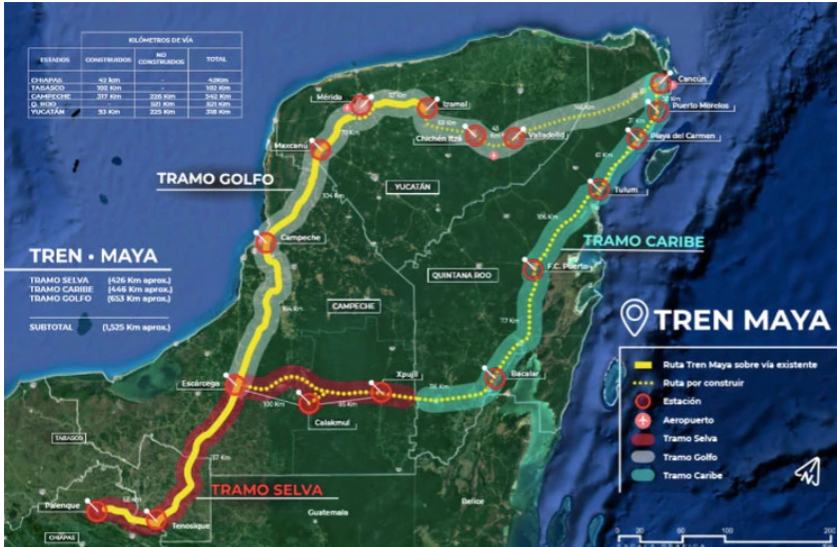The EIS lacks measurements of greenhouse gases and energy consumption

By Angélica Enciso L.
The Environmental Impact Statement for the Mayan Train has inconsistencies in its data, doesn’t take into account cultural impacts, and also does not have measurements of greenhouse gases, say experts at UNAM’s Latin American Geopolitics Observatory.
The Ministry of Environment and Natural Resources is evaluating the EIS for the stretch from Palenque, Chiapas, to Izamal, Yucatán.
After reviewing the EIS with great care and seriousness the conclusion is that the project does not have any of the conditions to arrive at a good end ant that the damage that it will cause, will not be compensated with good intentions, researchers Ana Esther Ceceña, Violeta Núñez, Josué García y Sandy Ramírez point out in their document, Observations on the EIS of the Maya Train.
The analysis indicates that in the EIS one of the biggest environmental problems that the project will cause, as it is designed, are the wildlife passages, since they don’t consider the home environment of the smaller species, taking an umbrella species of a larger dimension that cannot be representative of the whole, in addition with reference to this one, the wildlife passages have greater separation than what is advisable.
The document adds that there are inconsistencies in the information, since for example, it is said that the train will allow the mobility of 26, 520 passengers daily, and indicates that each train will have a capacity of 450. The hours of operation will be from 6 am to 11pm, in which the expected traffic will be 60 trains daily, approximately one train every 20 minutes.
The EIS lacks scenarios about the traffic of the trains and points out that it is necessary to present rates of greenhouse gas emissions, energy consumption and warming, among others.
The researchers warn that there is a special concern because the EIS underestimates the cultural impacts, the archeological density along the train’s route, which indicates a “tremendous risk for cultural and historical losses in the wake of the train and its development poles. Despite the agreements between the National Institute of Anthropology and History and Fonatur, it is not expected that the train’s route will be redesigned with every discovery.
This piece was originally published in Spanish in La Jornada on August 3rd, 2020. https://www.jornada.com.mx/2020/08/03/politica/010n2pol This English interpretation has been re-published by Schools for Chiapas.
